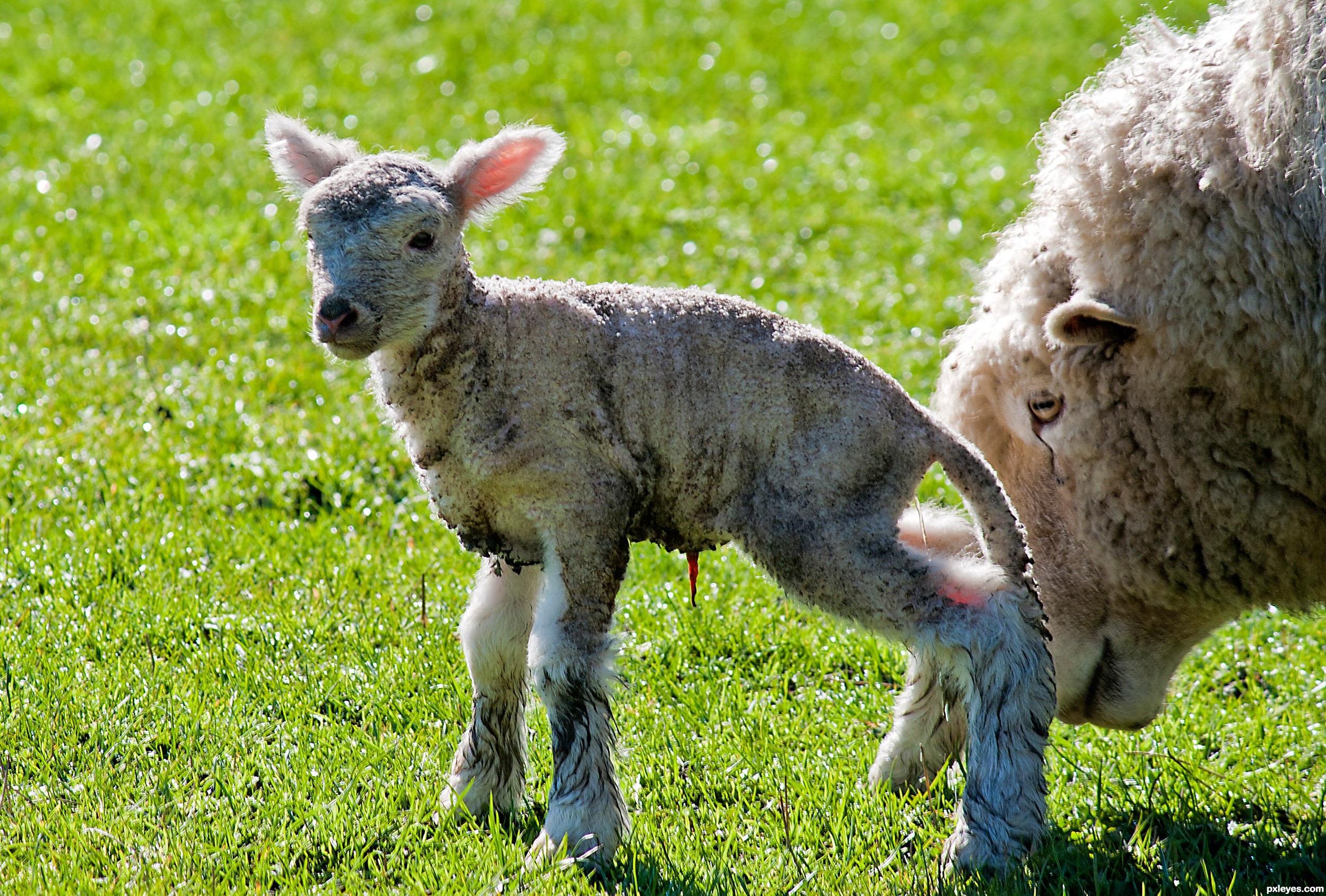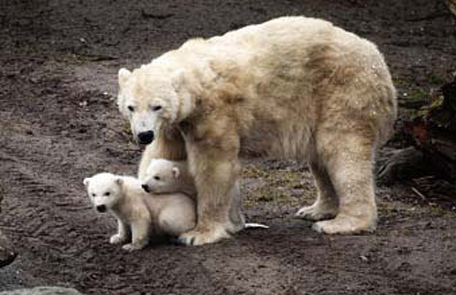Source(google.com.pk)
Irrespective of the specie – excluding cockroaches of course – people always consider that baby animals are the most adorable thing on God’s green earth. Cubs have a certain appeal that, more often than not, seems to fade when the animal reaches maturity. To put it simply, while an animal has a debatable degree of “cuteness” that is mostly a matter of the personal opinion, during the early infancy stages you simply cannot look at it without exclaiming “Awwww!”
It is unknown whether or not the cuteness represents an evolved defensive mechanism for the animal that is otherwise helpless without the mother at this point and if the nurturing instincts of the parents are also influenced by it. Strangely enough, as theorized by Nobel Prize winner Konrad Lorenz, the cuteness is not an adaptation proprietary to primates and humans, but rather the babies of these species present distinct features that enable parents to recognize them. All the adaptations are made to suit the requirements of the environment, which means that the cuteness factor is obsolete. Let’s find out more about the things that make us love baby animals.
1. Puppies are the probably most helpless ones in the bunch
PuppiesA puppy that is separated from its mother after birth has very few trump cards – aside of course from the adorable look that could get him adopted – and consequentially, limited chances of survival. To put it simply, the newborn puppy is deaf, blind and has no teeth, which means that it is virtually at the mercy of the world. Even the sense of smell, the trademark of the canine regnum, develops much later on, more exactly in about three weeks after being born. Therefore, you can’t really blame them for spending the first week sleeping 90% of the time, there aren’t many other things they can do for fun.
2. Kittens are born with different bone structures, based on the breed
KittensIn spite of the fact that the vast majority of kittens (over 90%) are born with the same blood type – A – their bone structure and the number of bones can differ radically from one breed to another. That is why certain breeds of cats grow significantly longer than others and the exponents are faster, more agile and have the ability to switch running direction easier.
3. Puppies and kitten share the same sweat gland position
Puppies and kittenThe feline and the canine regnum may have differences since the end of time and a situation where the two types of animals actually get along are rare, but there is one thing they have in common: the position of the sweat glands. In other words, unlike most animals, both kittens and puppies are born with the sweat in the pads of the paws. However, only puppies pant in order to vent excess heat and when a kitten exhibits a panting behavior it typically indicates it is exposed to some form of stress.
4. Parrots give their offspring names
ParrotsUnlike the negative propaganda enforced by pirate movies tells us, not all parrots are named Polly. Researchers have determined that soon after the parrot chick hatches from the eggs, its parents will give him a name which will also constitute the signature call of the bird. As the little parrot matures, he will adapt the original signature call to his “taste”, shortening/lengthening it with whistling or chirping. In other words, the parrot transforms his initial name into a nickname.
5. Baby chimpanzees love to play with dolls
Baby chimpanzeesYeah, not only that but baby chimps are actually utilizing stones, sticks and dirt to make up their own dolls, guided by nothing but their imagination. At the same time, research shows that in most cases the behavior persists through maturity. Before you are quick to discard this hypothesis and attribute it to a nurturing instinct, you should know that several studies shown baby chimpanzees used the dolls in very different games that held no resemblance to the natural cradling/nurturing behavior.
Baby Animals Video Baby Animals Pictures Wallpaper With Their Mothers Names Clipart Coloring Pages Cute Cartoon Photos

Baby Animals Video Baby Animals Pictures Wallpaper With Their Mothers Names Clipart Coloring Pages Cute Cartoon Photos

Baby Animals Video Baby Animals Pictures Wallpaper With Their Mothers Names Clipart Coloring Pages Cute Cartoon Photos

Baby Animals Video Baby Animals Pictures Wallpaper With Their Mothers Names Clipart Coloring Pages Cute Cartoon Photos

Baby Animals Video Baby Animals Pictures Wallpaper With Their Mothers Names Clipart Coloring Pages Cute Cartoon Photos

Baby Animals Video Baby Animals Pictures Wallpaper With Their Mothers Names Clipart Coloring Pages Cute Cartoon Photos
Baby Animals Video Baby Animals Pictures Wallpaper With Their Mothers Names Clipart Coloring Pages Cute Cartoon Photos

Baby Animals Video Baby Animals Pictures Wallpaper With Their Mothers Names Clipart Coloring Pages Cute Cartoon Photos

Baby Animals Video Baby Animals Pictures Wallpaper With Their Mothers Names Clipart Coloring Pages Cute Cartoon Photos

Baby Animals Video Baby Animals Pictures Wallpaper With Their Mothers Names Clipart Coloring Pages Cute Cartoon Photos

Baby Animals Video Baby Animals Pictures Wallpaper With Their Mothers Names Clipart Coloring Pages Cute Cartoon Photos

Baby Animals Video Baby Animals Pictures Wallpaper With Their Mothers Names Clipart Coloring Pages Cute Cartoon Photos

Baby Animals Video Baby Animals Pictures Wallpaper With Their Mothers Names Clipart Coloring Pages Cute Cartoon Photos

Baby Animals Video Baby Animals Pictures Wallpaper With Their Mothers Names Clipart Coloring Pages Cute Cartoon Photos

Baby Animals Video Baby Animals Pictures Wallpaper With Their Mothers Names Clipart Coloring Pages Cute Cartoon Photos
No comments:
Post a Comment